
Murray Hill is a neighborhood on the east side of Manhattan in New York City. Murray Hill is generally bordered to the east by the East River or Kips Bay and to the west by Midtown Manhattan, though the exact boundaries are disputed. Murray Hill is situated on a steep glacial hill that peaked between Lexington Avenue and Broadway. It was named after Robert Murray, the head of the Murray family, a mercantile family that settled in the area in the 18th century.

Fifth Avenue is a major and prominent thoroughfare in the borough of Manhattan in New York City, New York, United States. It stretches north from Washington Square Park in Greenwich Village to West 143rd Street in Harlem. It is one of the most expensive shopping streets in the world.

Turtle Bay is a neighborhood in New York City, on the east side of Midtown Manhattan. It extends from roughly 43rd Street to 53rd Street, and eastward from Lexington Avenue to the East River's western branch. The neighborhood is the site of the headquarters of the United Nations and the Chrysler Building. The Tudor City apartment complex is next to the southeast corner of Turtle Bay.
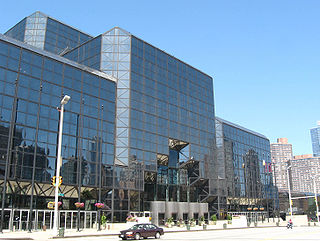
Eleventh Avenue is a north–south thoroughfare on the far West Side of the borough of Manhattan in New York City, located near the Hudson River. Eleventh Avenue originates in the Meatpacking District in the Greenwich Village and West Village neighborhoods at Gansevoort Street, where Eleventh Avenue, Tenth Avenue, and West Street intersect. It is considered part of the West Side Highway between 22nd and Gansevoort Streets.
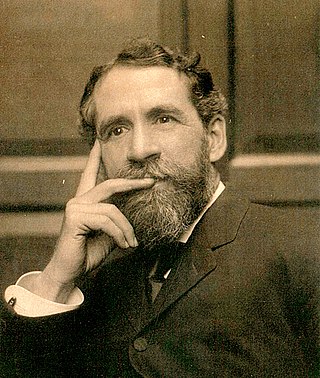
William Bunker Tubby was an American architect who was particularly notable for his work in New York City.

The Claremont Riding Academy, originally Claremont Stables, 175 West 89th Street, between Columbus and Amsterdam Avenues on Manhattan's Upper West Side, was designed by Frank A. Rooke and built in 1892. Closed in 2007, Claremont was the oldest continuously operated equestrian stable in New York City and the last public stable in Manhattan. The building was listed on the National Register of Historic Places in 1980 and designated a New York City Landmark in 1990. Since 2010, it has belonged to the Stephen Gaynor School.

Charles B. J. Snyder was an American architect, architectural engineer, and mechanical engineer in the field of urban school building design and construction. He is widely recognized for his leadership, innovation, and transformation of school building construction process, design, and quality during his tenure as Superintendent of School Buildings for the New York City Board of Education between 1891 and 1923.

The Central Park West Historic District is located along Central Park West, between 61st and 97th Streets, on the Upper West Side of Manhattan in New York City, United States. The district was added to the National Register of Historic Places on November 9, 1982. The district encompasses a portion of the Upper West Side-Central Park West Historic District as designated by the New York City Landmarks Preservation Commission, and contains a number of prominent New York City designated landmarks, including the Dakota, a National Historic Landmark. The buildings date from the late 19th century to the early 1940s and exhibit a variety of architectural styles. The majority of the district's buildings are of neo-Italian Renaissance style, but Art Deco is a popular theme as well.

George Frederick Pelham was an American architect and the son of George Brown Pelham, who was also an architect.

Manhattan Avenue is a street in the Manhattan Valley neighborhood of Manhattan in New York City, extending from 100th Street to 124th Street. Not included in the original Commissioners' Plan of 1811, it is parallel to Columbus Avenue to the west and Central Park West/Frederick Douglass Boulevard to the east.
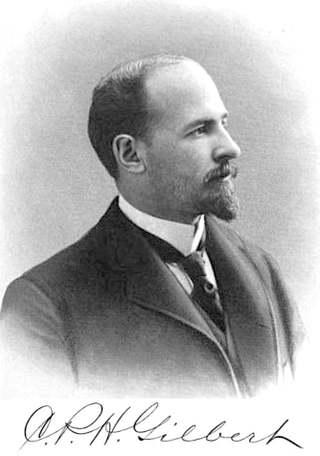
Charles Pierrepont Henry Gilbert was an American architect of the late-19th and early-20th centuries best known for designing townhouses and mansions.
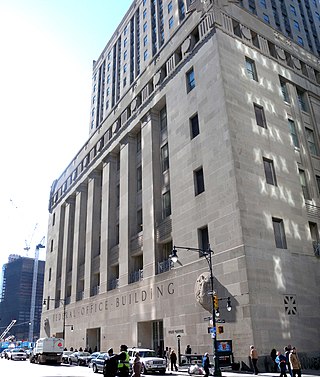
Church Street and Trinity Place form a single northbound roadway in Lower Manhattan, New York City. Its northern end is at Canal Street and its southern end is at Morris Street, where Trinity Place merges with Greenwich Street. The dividing point is Liberty Street.
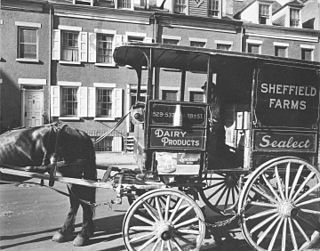
The Sheffield Farms–Slawson–Decker Company, known as Sheffield Farms, was a dairy that pasteurized, bottled, and delivered milk in New York City in the first half of the 20th century. It became one of the largest dairy companies in the world, selling 20% of the city's milk. The company played a major part in transforming commercial milk into a clean and healthy product.

The East 73rd Street Historic District is a block of that street on the Upper East Side of the New York City borough of Manhattan, on the south side of the street between Lexington and Third Avenues. It is a neighborhood of small rowhouses built from the mid-19th to early 20th centuries.

Sheffield Farms Stable was a historic stable located in Manhattanville, Manhattan, New York. Designed by Frank A. Rooke, it was a six-story, light colored brick building with terracotta ornament. It was originally built in 1903 as a two-story stable building for the Sheffield Farms dairy, then expanded to its present size in 1909. It housed horses used for the delivery of pasteurized milk until July 1938. It was sold in 1942, after which it housed a real estate company, insurance company, and warehouse.

The Mount Morris Bank Building, also referred to as the Corn Exchange Bank and Corn Exchange Building, is an historic building in the East Harlem neighborhood of Manhattan, New York City, located at 81-85 East 125th Street on the northwest corner of Park Avenue. Although an architectural standout when new in 1883, by the late 1970s it was vacant, and remained so for three decades, vandalized and deteriorating. In 2009 the city demolished, for safety, most of what remained after a 1997 fire, but in 2012 a developer undertook to rebuild it for commercial occupancy, and the building reopened in May 2015.

Rossleigh Court, constructed between 1906 and 1907, currently is a rental apartment building located on the northwest corner of 85th Street and Central Park West in the Upper West Side of Manhattan in New York City.

The Sniffen Court Historic District is a small close-ended mews, running perpendicularly southwest from East 36th Street, between Third and Lexington Avenues in the Murray Hill neighborhood of Manhattan in New York City. The district, one of the smallest in New York City, encompasses the entire alley, which consists of 10 two-story brick stables built in 1863–1864 in the early Romanesque Revival style. The New York City Landmarks Preservation Commission designated Sniffen Court as a city historic district on June 21, 1966, and the district was added to the National Register of Historic Places on November 28, 1973.

The Excelsior Power Company Building is a residential building at 33–43 Gold Street in the Financial District of Manhattan in New York City. It was designed in the Romanesque Revival style by William C. Gunnell and built by Robert L. Darragh. Completed in 1889, it is Manhattan's oldest known remaining building erected specifically for commercial power generation.

Prentis Hall is a historic building located on the Manhattanville campus of Columbia University at 632 West 125th Street. It houses the university's department of music and the Computer Music Center, as well as facilities for the School of the Arts. It is one of three historic buildings that survived in the university's Manhattanville plan, the others being the Studebaker Building and the Nash Building.























